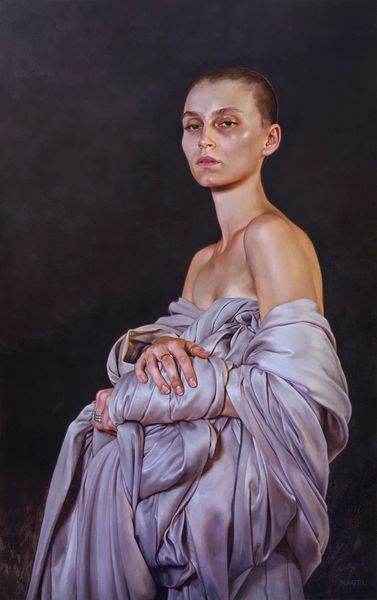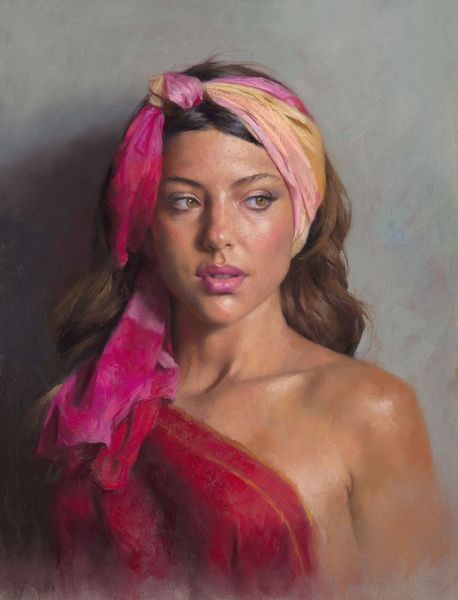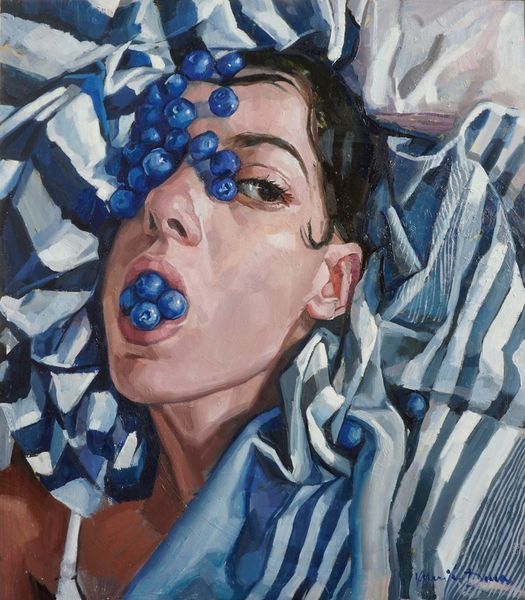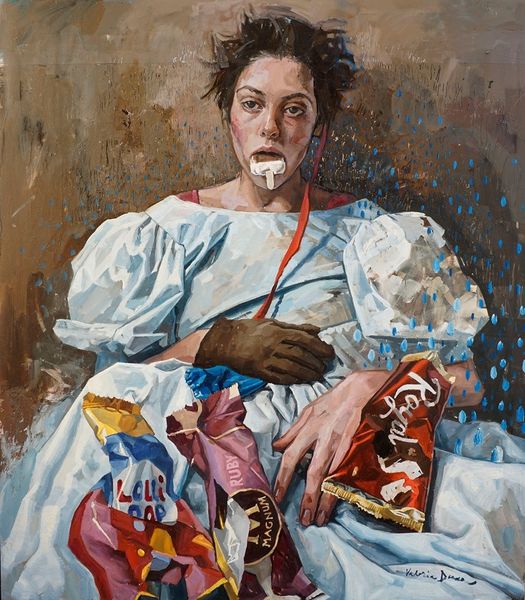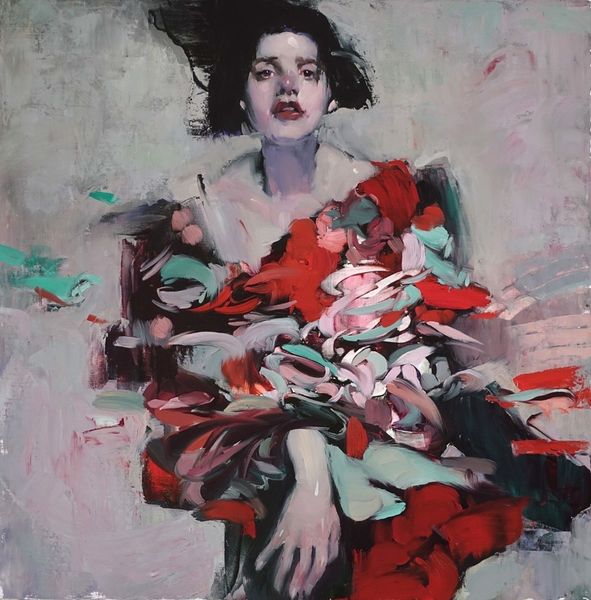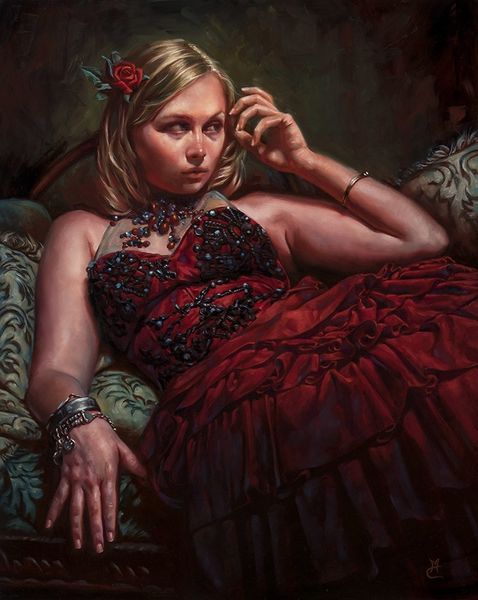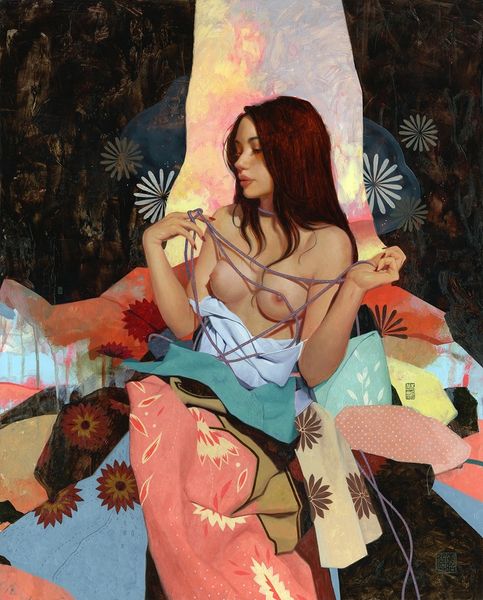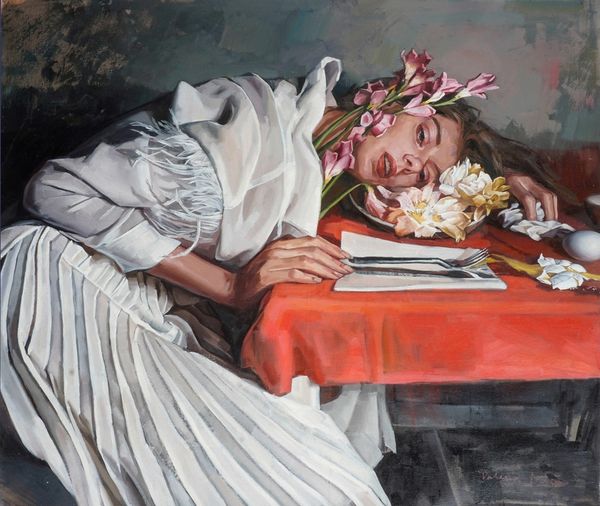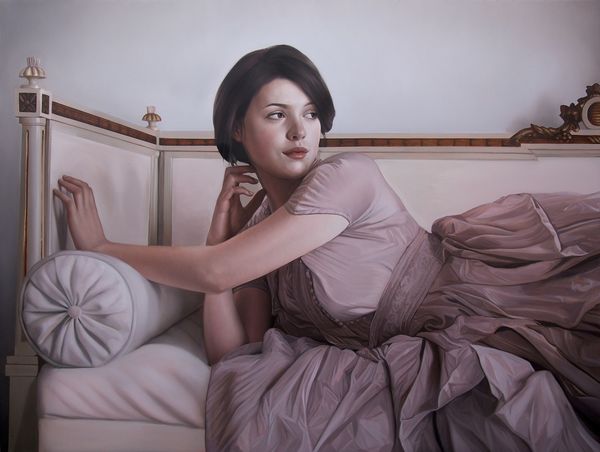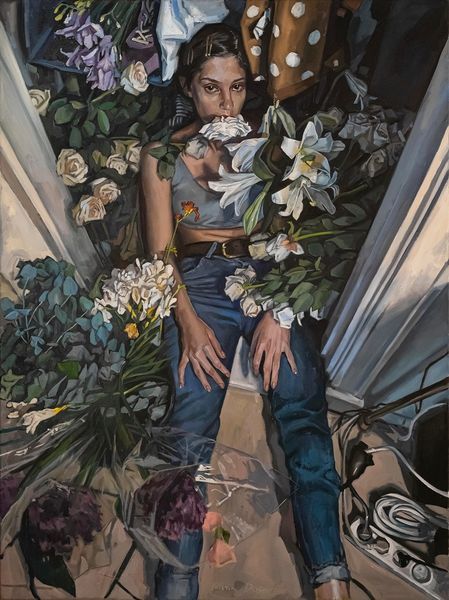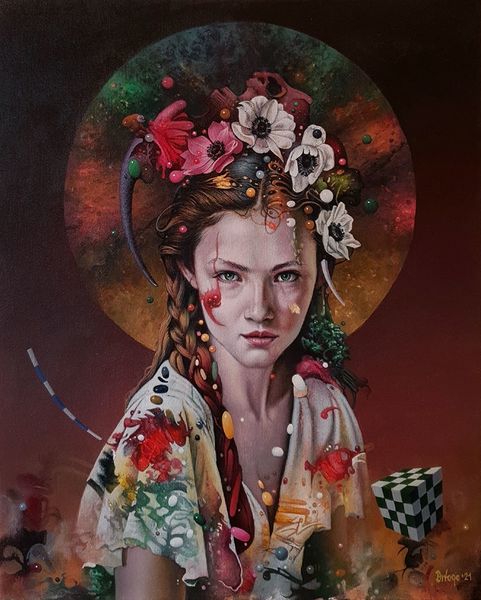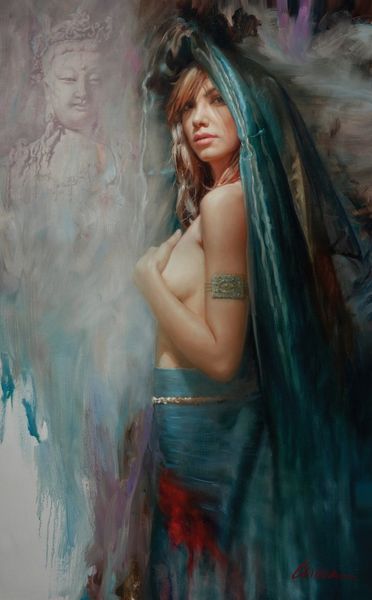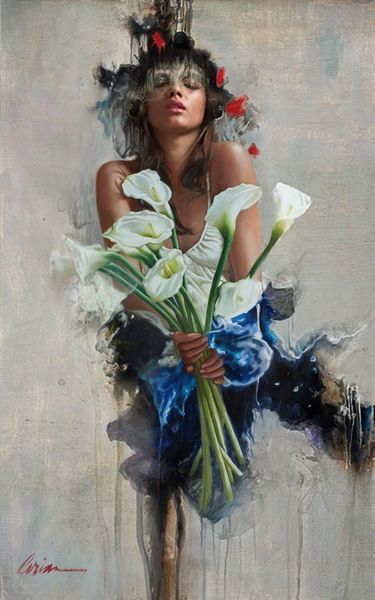
oil-paint
#
portrait
#
figurative
#
contemporary
#
oil-paint
#
figuration
#
oil painting
#
neo expressionist
#
neo-expressionism
#
history-painting
#
portrait art
Copyright: Modern Artists: Artvee
Editor: So this is "A Hundred Days of Happiness" by Valeria Duca, an oil painting showing a person covered with blister packs. The colour palette is mostly subdued blues, and the figure's gaze is pretty direct. It gives me a feeling of vulnerability, like they are exposed or ill. What do you see in this piece? Curator: Well, from a historical perspective, the immediate symbol of modernity here are the pill packages, acting like an uneasy armour, and evoking critical questions about mental health treatment and the social pressure to consume medication in contemporary society. What’s the narrative being presented, and whose story is this? Editor: I hadn't really thought about the "whose story" element, more about the emotional effect. Is there a way we can learn about the painting's cultural relevance? Curator: Absolutely. Neo-Expressionism, for example, sought to revive figurative painting and inject raw emotion into art. How does that artistic lineage play into this piece and its current setting? Perhaps think about this piece in relation to the broader cultural anxiety around health, pharmaceuticals and personal well-being, and in the institutional context of a gallery or museum: who has access, and who feels represented? Editor: That gives me a totally different viewpoint; thinking about it less as just one person's experience and more as part of a broader social statement is a really powerful perspective shift. I see what you mean! Curator: And I hadn't considered the figure’s personal narrative until you pointed it out, viewing the painting with empathy. Editor: So together we highlighted its emotional presence and its broader role in today’s visual culture!
Comments
No comments
Be the first to comment and join the conversation on the ultimate creative platform.
